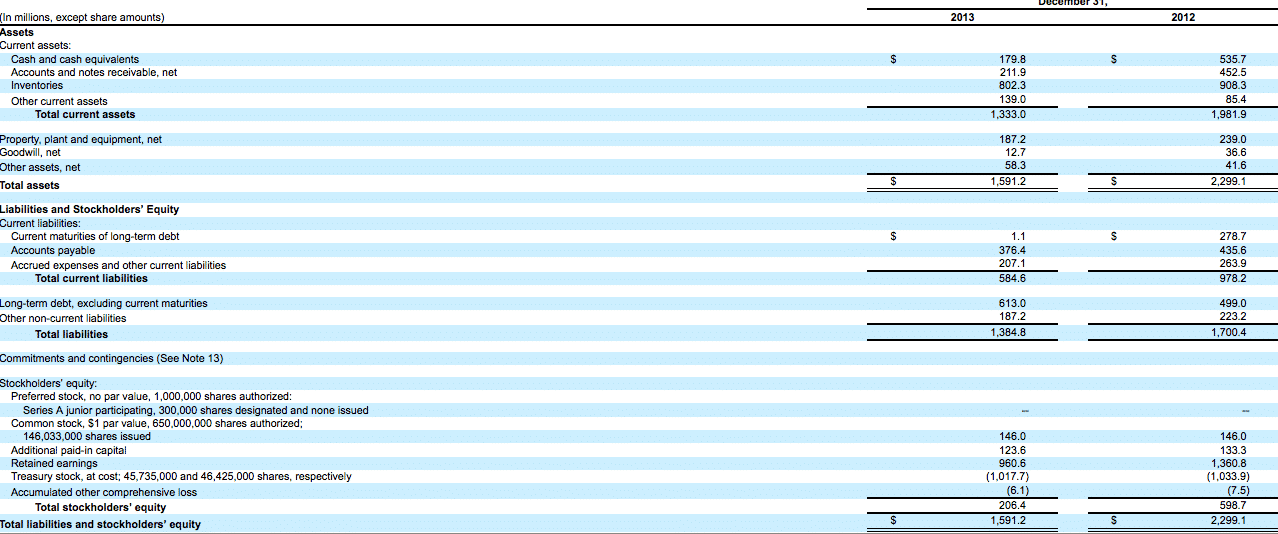
Total liabilities are all of the debts the company owes to any outside entity. On the other hand, a comparatively low D/E ratio may indicate that the company is not taking full advantage of the growth that can be accessed via debt. Liabilities are items or money the company owes, such as mortgages, loans, etc. Different industries vary in D/E ratios because some industries may have intensive capital compared to others. If the D/E ratio gets too high, managers may issue more equity or buy back some of the outstanding debt to reduce the ratio.
Part 2: Your Current Nest Egg
This usually happens when a company is losing money and is not generating enough cash flow to cover its debts. The current ratio reveals how a company can maximize its current assets on the balance sheet to satisfy its current debts and other financial obligations. This tells us that Company A appears to be in better short-term financial health than Company B since its quick assets can meet its current debt obligations. A high D/E ratio suggests that the company is sourcing more of its business operations by borrowing money, which may subject the company to potential risks if debt levels are too high. Suppose a company carries $200 million in total debt and $100 million in shareholders’ equity per its balance sheet.
Why Debt Capital Matters
They also assess the D/E ratio in the context of short-term leverage ratios, profitability, and growth expectations. To calculate this ratio, find the company’s earnings before interest and taxes (EBIT), then divide by the interest expense of long-term debts. Use pretax earnings because interest is tax-deductible; the full amount of earnings can eventually be used to pay interest.
Is an increase in the debt-to-equity ratio bad?
However, an ideal D/E ratio varies depending on the nature of the business and its industry because there are some industries that are more capital-intensive than others. Current assets include cash, inventory, accounts receivable, and other current assets that can be liquidated or converted into cash in less than a year. The quick ratio is also a more conservative estimate of how liquid a company payroll journal entries for salaries is and is considered to be a true indicator of short-term cash capabilities. Quick assets are those most liquid current assets that can quickly be converted into cash. These assets include cash and cash equivalents, marketable securities, and net accounts receivable. The principal payment and interest expense are also fixed and known, supposing that the loan is paid back at a consistent rate.
- It’s important to analyse the company’s financial statements, cash flows and other ratios to understand the company’s financial situation.
- In many cases, it involves dividing a company’s debt by something else, such as shareholders equity, total capital, or EBITDA.
- All of our content is based on objective analysis, and the opinions are our own.
- In general, a high debt-to-equity ratio indicates that a company may not be able to generate enough cash to meet its debt obligations.
- The optimal debt-to-equity ratio will tend to vary widely by industry, but the general consensus is that it should not be above a level of 2.0.
- Investors often scrutinize the Debt to Equity ratio before making investment decisions.
Both of these values can be found on a company’s balance sheet, which is a financial statement that details the balances for each account. Debt-to-equity is a gearing ratio comparing a company’s liabilities to its shareholder equity. Typical debt-to-equity ratios vary by industry, but companies often will borrow amounts that exceed their total equity in order to fuel growth, which can help maximize profits.
A company with a higher ratio than its industry average, therefore, may have difficulty securing additional funding from either source. This ratio compares a company’s total liabilities to its shareholder equity. It is widely considered one of the most important corporate valuation metrics because it highlights a company’s dependence on borrowed funds and its ability to meet those financial obligations. The debt-to-equity ratio (D/E) is a financial leverage ratio that can be helpful when attempting to understand a company’s economic health and if an investment is worthwhile or not.

The formula for calculating the debt-to-equity ratio (D/E) is equal to the total debt divided by total shareholders equity. Many startups make high use of leverage to grow, and even plan to use the proceeds of an initial public offering, or IPO, to pay down their debt. The results of their IPO will determine their debt-to-equity ratio, as investors put a value on the company’s equity.
For example, a prospective mortgage borrower is more likely to be able to continue making payments during a period of extended unemployment if they have more assets than debt. This is also true for an individual applying for a small business loan or a line of credit. The personal D/E ratio is often used when an individual or a small business is applying for a loan. Lenders use the D/E figure to assess a loan applicant’s ability to continue making loan payments in the event of a temporary loss of income. If both companies have $1.5 million in shareholder equity, then they both have a D/E ratio of 1. On the surface, the risk from leverage is identical, but in reality, the second company is riskier.